Plague (“The Black Death”) is back in the news. This disease killed millions during the 6th, 14th, and 20th centuries. In the 14th century, it wiped out nearly half of Europe after killing millions in Asia. Is plague now back? Did it ever leave? How do you avoid it?
Plague in the headlines:
Recent news has focused on a couple from Inner Mongolia who traveled to Bejing to receive medical care for illness symptoms. After arriving in Bejing, they were diagnosed with plague and are now receiving medical care. The source of their disease is still unknown.
How much plague is out there?
From 2010 to 2015 there were 3,248 cases of plague reported worldwide, including 584 deaths. The disease occurs in Africa, Asia, and South America. Several cases a year occur here in the southwestern United States!
How does the disease spread?
The plague bacteria, called Yersinis pestis, is spread by rodent fleas. These fleas jump from rodent to rodent, from rodents to larger animals (dogs, cats, and other mammals), and from rodents and animals to humans.
Humans become infected with Yersinia through:
1) Bites from rodent fleas (and, less commonly, exposure to their blood or bodily fluids).
2) Exposure to bodily fluids, blood, or respiratory droplets of larger infected mammals.
3) Contact with infected humans (blood, bodily fluids, and respiratory droplets).
In addition, research now also points to human body lice as a potential source of Yersinia transmission.
Plague “types”:
Bubonic: One or more painful, swollen, tender lymph nodes. The enlarged nodes are called “Buboes.”
Pulmonic: Severe pneumonia (lung infection), high fever, chills.
Yersinia may also enter the bloodstream and cause fever, bleeding, abnormal blood clotting, and gangrene (death of tissue in the fingers and toes). This is referred to as septicemia.
Treating Plague:
Without treatment, Bubonic plague is fatal in about half of victims and Pneumonic is nearly always fatal. Antibiotics are effective in treating all forms of the disease and in prevention after exposure. Effective antibiotics include: Streptomycin, Gentamycin, Doxycycline, Tetracycline, and Fluoroquinolones (Levaquin, Ciprofloxacin).
Avoiding Plague:
The CDC (Centers For Disease Control and Prevention) recommends:
- Eliminating nesting places for rodents around homes.
- Avoiding picking up or touching dead animals.
- Wearing gloves when handling sick or dead animals.
- Avoiding sleeping with pets.
- Using insect repellent that contains DEET.
You can also protect yourself by protecting your pets:
- Treating dogs and cats for fleas regularly.
- Keeping pet food in rodent-proof containers.
- Taking sick pets to the veterinarian promptly.
- Prohibiting pets from hunting or roaming in rodent habitats, such as prairie dog colonies.
At our NY Travel Clinic, we review disease avoidance during travel. Hopefully, plague will not be a disease you will EVER encounter!


Leave A Comment
You must be logged in to post a comment.